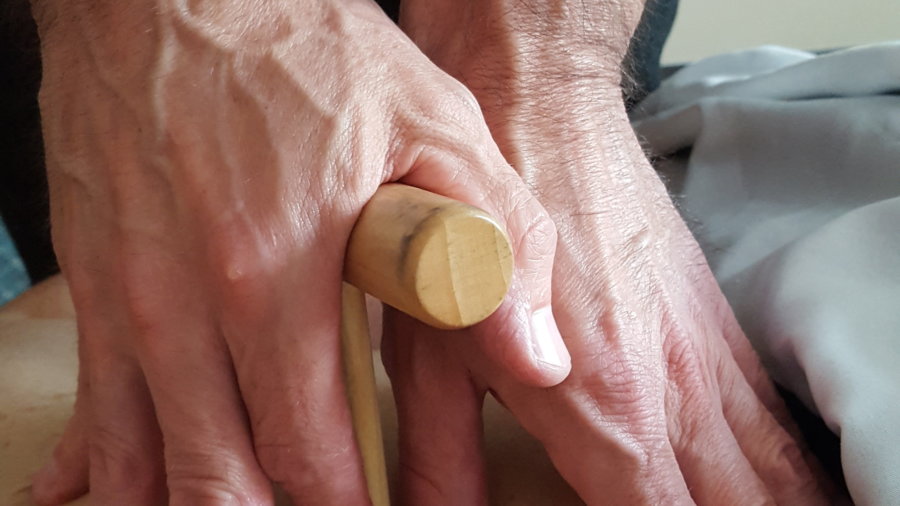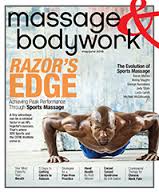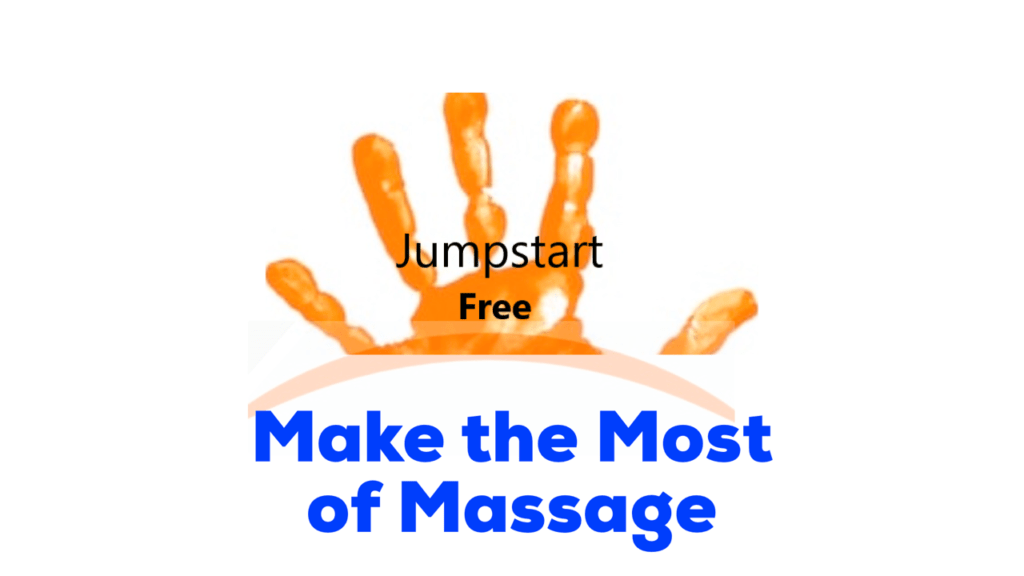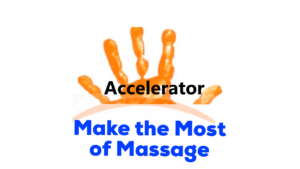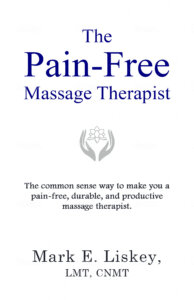I’m going to scare you. Ready? Massage injury (or any injury that prevents you from doing massage).
If you can’t work, you don’t get paid, right?
The good news is that unless you really hurt yourself, like a broken arm, you can work through most injuries without worsening the injury or developing a compensatory injury.
How?
By finding a different way to get the job done.
I know this is a really broad statement. So, let’s make it useful by applying it to specific examples.
Massage Injury: Finger/Thumb
Here’s how you can get the job done without causing pain to an injured finger or thumb.
1. Use the non-injured finger/thumb instead of the injured finger/thumb.
But what if I injured my go-to thumb, Mark?
Well, then, it’s time to learn how to press with your non-dominant thumb.
It’s not crazy hard.
And I have a way to expedite things: Combine two hands when pressing so that one hand acts as a guide, sensor and stabilizer.
For example, say I’m left-handed and injured my left thumb.
To use my non-dominant (right) thumb, I combine my hands when I press.
Here’s how it might look:
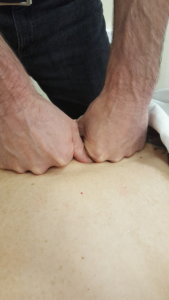
The fist of the dominant hand (left) is not only a stabilizer, it’s also assisting in applying pressure, making it easier for my right thumb to adapt to doing the work.
The left thumb (hurt thumb) is just hanging out:-)
2. Use a massage tool.
A while back I jammed my middle finger.
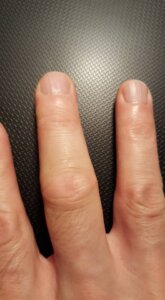
Sucked for me because I’m a middle-knuckle kind of massager.
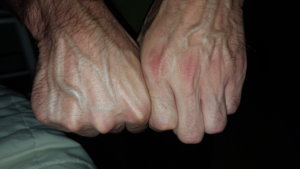
But it didn’t take me long to discover that a long T-bar was a perfect substitute for a knuckle.
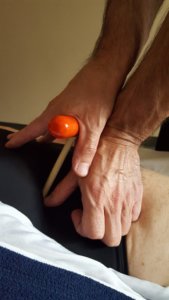
And I didn’t miss a day’s work with my jammed finger.
What about finding a different way around a shoulder injury?
Massage Injury: Shoulder
You can…
1. Use the non-injured arm for the bulk of the work.
If you injured your right shoulder and do a lot of deep work with your right forearm, use your left forearm.
2. Experiment with table and stool height.
I have left shoulder instability. When I lowered my table and used my fists and knuckles to deliver deep pressure instead of using my forearms, my shoulder pain went away.
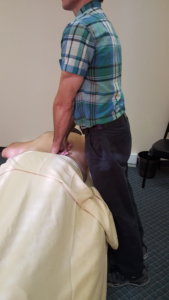
But my shoulder condition may not be the same as yours.
So, experiment with different table and stool heights and find the mechanical advantage for delivering pressure with your particular shoulder condition.
3. Sit or stand.
Does your shoulder feel better when you sit and lean?
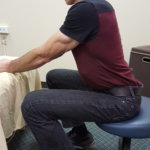
Or does it feel better when you stand and lean?
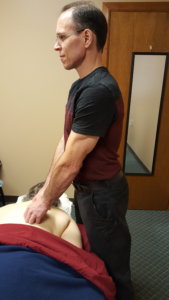
Relax your back.
4. Stop doing moves that hurt you.
Over-extension bothered my shoulder, especially at the end of a long stroke when I was applying firm pressure.
So, why do long strokes?
Good question.
I shortened my strokes and no more over-extension. I do short stroke massage all the time now.
More than Meets the Eye
Finding a different way to get the job done goes beyond just getting through an injury.
It’s actually a way to extend your career and keep your body happy.
The reasoning is the more ways you have to get the job done, the less likely you are to burn out one body part.
For instance, I use massage tools more often now because of my jammed middle finger. And my fingers thank me for that.
Now I do short stroke massage and fist massage because of my shoulder instability. Fist massage has led me to becoming more vertical during a massage. And my shoulders and back thank me for that.
Healing While on the Job
So, if you have a massage injury or condition that’s not incapacitating, here’s how you can work around it:
- Give the bulk of the workload to the uninjured side.
- Use massage tools.
- Experiment with table and stool height.
- Sit or stand.
- Stop doing moves that hurt you.
If you need more help, check out: Table Height is Everything.
 Lastly, I have NCBTMB-approved, online courses that will help you figure out everything you need to do to massage pain-free. You can check them out here: Mark’s Pain-Free Massage classes.
Lastly, I have NCBTMB-approved, online courses that will help you figure out everything you need to do to massage pain-free. You can check them out here: Mark’s Pain-Free Massage classes.
